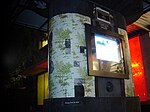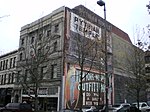Bates Technical College
1940 establishments in Washington (state)Community colleges in Washington (state)Educational institutions established in 1940Technological universities in the United StatesUniversities and colleges accredited by the Northwest Commission on Colleges and Universities ... and 1 more
Universities and colleges in Tacoma, Washington
Bates Technical College is a public technical college located in Tacoma, Washington, US. The college offers two-year Associate of Applied Science degrees, academic certificates, and industry certifications. Bates is accredited by the Northwest Commission on Colleges and Universities, and maintains articulation agreements with several four-year colleges and universities. Some two-year degrees offered by this college are transferable. Bates operates three campuses in Tacoma, occupying a total of approximately 650,000 square feet (60,000 m2) of classrooms, shops, meeting rooms, and offices.
Excerpt from the Wikipedia article Bates Technical College (License: CC BY-SA 3.0, Authors).Bates Technical College
South Yakima Avenue, Tacoma
Geographical coordinates (GPS) Address Phone number Website External links Nearby Places Show on map
Geographical coordinates (GPS)
| Latitude | Longitude |
|---|---|
| N 47.251594 ° | E -122.44645 ° |
Address
Bates Technical College Down Campus
South Yakima Avenue 1101
98405 Tacoma
Washington, United States
Open on Google Maps








